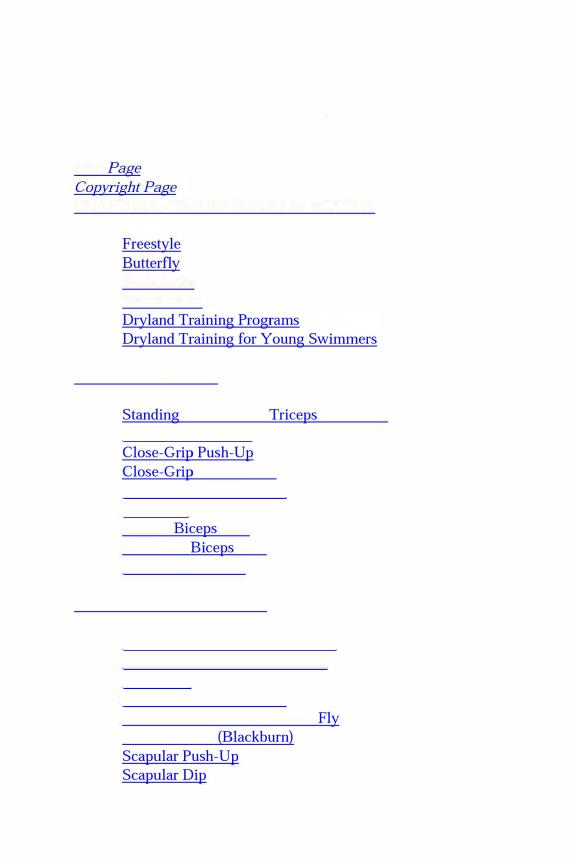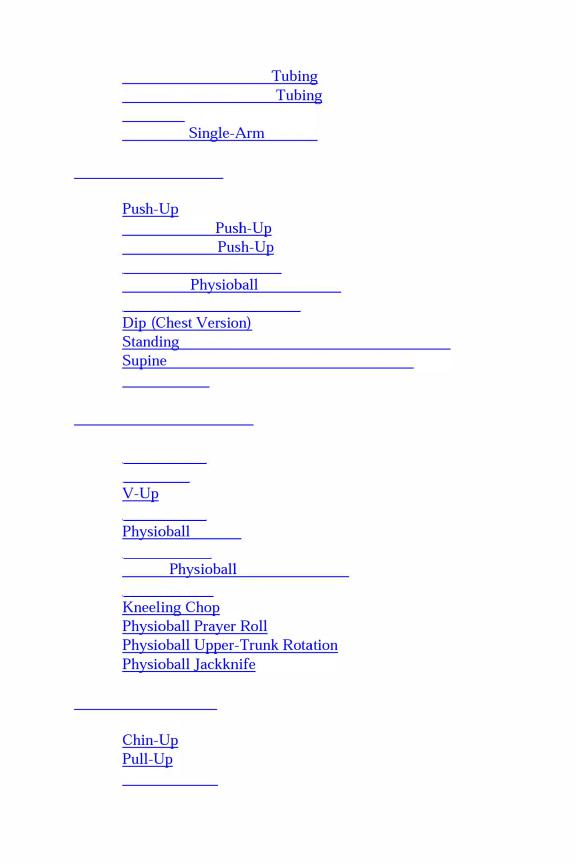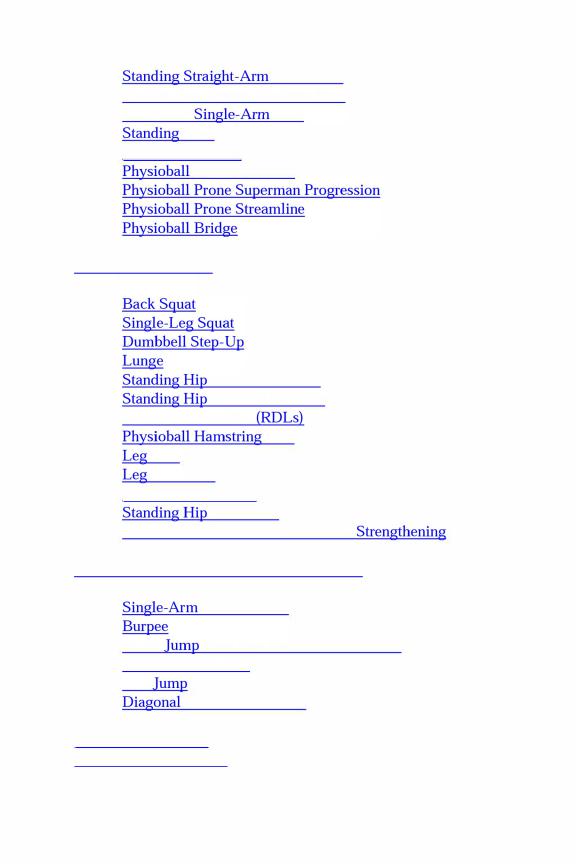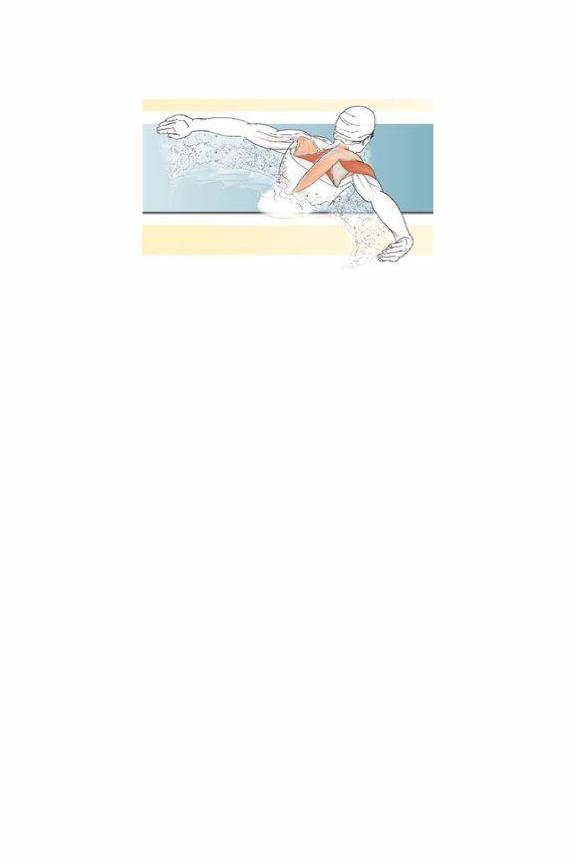
McLeod - Swimming Anatomy - 2010
.pdf


Library of Congress Cataloging-in-Publication Data
McLeod, Ian. Swimming anatomy / Ian McLeod.
p. cm.
ISBN-13: 978-0-7360-7571-8 (soft cover) ISBN-10: 978-0-736-09385-9 (soft cover)
1.Swimming--Training. 2. Swimming--Physiological aspects. 3. Aquatic sports injuries.
I.Title.
GV837.7.M37 2010 797.2'1--dc22 2009016094
ISBN-10: 978-0-736-09385-9 (print)
ISBN-10: 0-7360-8627-7 (Adobe PDF)
ISBN-13: 978-0-7360-7571-8 (print)
ISBN-13: 978-0-7360-8627-1 (Adobe PDF)
Copyright © 2010 by Ian A. McLeod
All rights reserved. Except for use in a review, the reproduction or utilization of this work in any form or by any electronic, mechanical, or other means, now known or hereafter invented, including xerography, photocopying, and recording, and in any information storage and retrieval system, is forbidden without the written permission of the publisher.
This publication is written and published to provide accurate and authoritative information relevant to the subject matter presented. It is published and sold with the understanding that the author and publisher are not engaged in rendering legal, medical, or other professional services by reason of their authorship or publication of this work. If medical or other expert assistance is required, the services of a competent professional person should be sought.
Acquisitions Editor:Tom Heine; Developmental Editor:Leigh Keylock; Assistant Editor:Laura Podeschi; Copyeditor:Bob Replinger; Permission Manager:Martha Gullo; GraphicDesigner:FredStarbird; Graphic Artist: Tara Welsch; Cover Designer: Keith Blomberg; Photographer (for illustration references): Neil Bernstein; Photo Asset Manager:Laura Fitch; Visual Production Assistant:loyce Brumfield; Art Manager:Kelly Hendren; Associate Art Manager:Alan L. Wilborn; Illustrator (cover):lennifer Gibas; Illustrators (interior):lennifer Gibas and Becky DIes; Printer:United Graphics
Human Kinetics books are available at special discounts for bulk purchase. Special editions or book excerpts can also be created to specification. For details, contact the Special Sales Manager at Human Kinetics.
Printed in the United States of America 10 9 8 7 6 5 4 3 2 1
The paper in this book is certified under a sustainable forestry program.
Human Kinetics
Web site: www.HumanKinetics.com

United States:Human Kinetics
P.O. Box 5076
Champaign, IL 61825-5076 800-747-4457
e-mail: humank@hkusa.com
Canada:Human Kinetics 475 Devonshire Road Unit 100 Windsor, ON N8Y 2L5 800-465-7301 (in Canada only) e-mail: info@hkcanada.com
Europe:Human Kinetics
107 Bradford Road
Stanningley
Leeds LS28 6AT, United Kingdom
+44 (0) 113 255 5665
e-mail: hk@hkeurope.com
Australia:Human Kinetics
57A Price Avenue
Lower Mitcham, South Australia 5062
08 8372 0999
e-mail: info@hkaustralia.com
NewZealand.Human Kinetics Division of Sports Distributors NZ Ltd. P.O. Box 300 226 Albany
North Shore City
Auckland 0064 9 448 1207
e-mail: info@humankinetics.co.nz
E4563




CHAPTER 1
THE SWIMMER IN MOTION
Swimming Anatomy is both a visual guide to the role of the musculoskeletal system in the four competitive swim strokes and a catalog of swimming-oriented dryland and weight-room exercises. The exercises in the text will help you maximize your performance and gain a competitive edge. Specific examples will help you choose exercises that target the most-used muscles for each stroke, starts, and turns to ensure that you are getting the best results from your program. Included are exercises that may help you prevent injuries by strengthening key stabilizing muscles and decreasing muscle imbalances. To help you understand how these exercises enhance performance, descriptions of the roles that various muscles play in propelling a swimmer through the water and guidance in using selected exercises to target those muscles are included. This chapter features an overview of the primary muscles used in the kicking motions and during the pull-through and recovery phases of freestyle, butterfly, backstroke, and breaststroke. The chapter also addresses some strength and conditioning principles and how they relate to designing a

swimming-specific dryland program. Chapters 2 through 8, organized according to major body parts, each contain exercises with accompanying illustrations and easy-to-follow descriptions and instructions. The anatomical illustrations that accompany the exercises are color-coded to indicate the primary and secondary muscles and connective tissues featured in each exercise and swimming-specific movement.
Primary muscles
D
Secondary muscles
D
Connective tissues
Swimmers face several unique challenges that athletes in most land-based sports do not encounter. The first challenge is the total-body nature of all four competitive strokes, which involve movements of both the upper and lower extremities. A coordinated effort of the musculoskeletal system is required to keep each body part moving correctly to maximize efficiency of movement through the water. To visualize this coordinated effort, think of the body as a long chain and each body segment as a link in the chain. Because all the segments are linked together,
